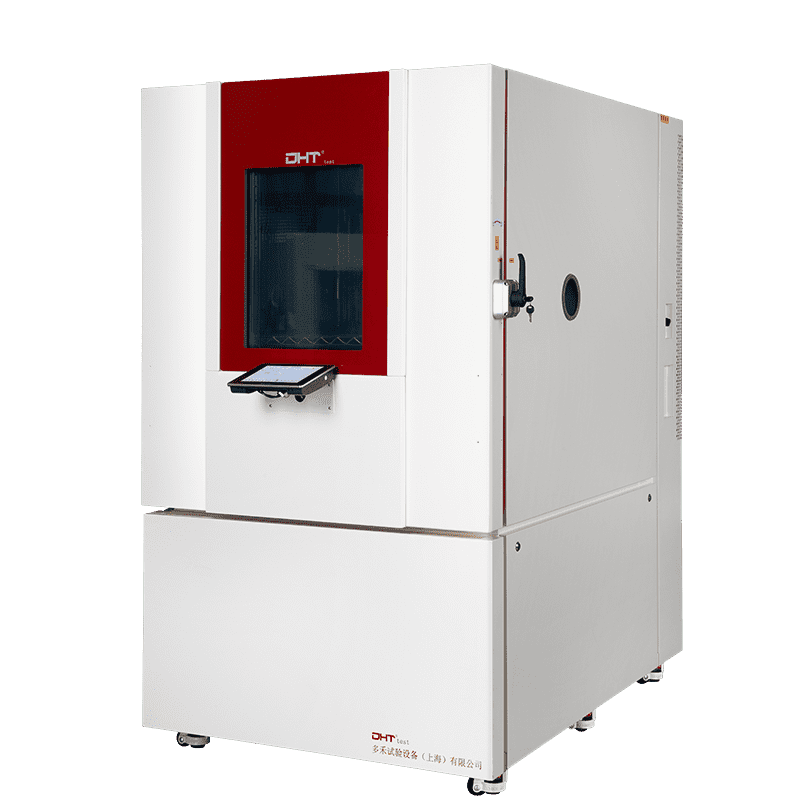Written by Shirley
Product Manager, Doaho Test (DHT®)
In an era of accelerated product iteration and increasingly constrained R&D budgets, cost-efficient environmental testing has become a core competitive advantage for manufacturers. Traditional large-scale test equipment, while comprehensive, often becomes a bottleneck due to high energy consumption, extended testing cycles, and operational complexity. In contrast, the Benchtop Environmental Chamber is emerging as a strategic tool for optimizing R&D investment thanks to its compact design, fast response time, and modular functionality. This article explores how to strategically leverage benchtop chambers to build a lean, high-efficiency testing framework.
Redefining the Strategic Value of Benchtop Test Chambers
A benchtop environmental chamber is not merely a scaled-down version of a standard test system. It is a highly specialized instrument designed for precision environmental simulation, space-saving deployment, and modular expansion. Tailored for laboratories and small-batch validation scenarios, it offers the following key advantages over traditional walk-in or floor-standing chambers:
-
Space Efficiency: Occupies less than 0.5 m² and can be deployed directly on a standard lab bench.
-
High ROI: Acquisition costs are reduced by 40%–60%, with maintenance intervals extended by over 30%.
-
Energy Efficiency: Advanced thermal design reduces energy consumption by 50%–70% in long-duration tests (e.g., 72-hour damp heat testing).
-
Fast Response: Supports rapid temperature ramp rates of ≥5°C/min, accelerating test cycles.
-
Functional Expandability: Optional modules for lighting, low-oxygen, or mixed-stress testing enable broader application coverage.
For agile development teams, the benchtop test chamber has evolved from an auxiliary device into a core infrastructure asset that shortens development cycles and helps control operating costs.
Four Strategic Dimensions for Cost Reduction and Efficiency Gains
-
Time Efficiency: Compressing Validation Timelines
-
Technical Basis: The small test volume (<200L) enables fast environmental transitions. For example, a Benchtop Temperature Chamber can ramp from -40°C to +85°C in just 15 minutes, while a traditional unit may take over an hour.
-
Case Study: A semiconductor manufacturer reduced the cycle time of 1,000 temperature transitions from 7 days to 32 hours, cutting labor costs by 65%.
-
-
Energy Optimization and Lower Test Costs
-
Power Consumption: For a 72-hour damp heat test (40°C / 95% RH), benchtop chambers consume approximately 18 kWh—about one-third the energy of a comparable floor-standing chamber.
-
Long-Term Savings: In labs running 200 test batches per year, energy savings over five years can exceed $15,000.
-
-
Space and Maintenance Streamlining
-
Plug-and-Play Deployment: Operates on standard 220V power without requiring facility modifications or dedicated infrastructure.
-
Smart Maintenance: Built-in self-diagnostics reduce routine maintenance time by up to 80%, minimizing technician intervention.
-
-
Parallel Testing for Increased Throughput
-
Modular Configuration: Multiple units can be deployed simultaneously for different test conditions. For example, combining a Benchtop Ultra Low Humidity Test Chamber with a temperature chamber allows concurrent testing of various stress profiles.
-
Operational Gains: One automotive electronics company used four benchtop chambers in parallel and increased data acquisition efficiency by 300%.
-
Expanding Applications Across High-Performance Industries
High-Reliability Electronics
-
Challenge: THB (Temperature-Humidity-Bias) tests at 85°C / 85% RH require high stability to prevent overstressing components.
-
Solution: Benchtop chambers maintain precise environmental control with fluctuations ≤±0.5°C and humidity deviation ≤±2% RH.
New Energy Battery Development
-
Challenge: Validating electrolyte stability in ultra-low humidity (≤10% RH) environments.
-
Solution: The Benchtop Ultra Low Humidity Test Chamber delivers accurate humidity control for sensitive materials.
Medical Device Validation
-
Challenge: Simulating combined thermal and vibration stress during diagnostic reagent transport.
-
Solution: Compact chambers support coupled stress simulation in limited lab space.
Advanced Materials Research
-
Challenge: Evaluating nanocoating failures under rapid thermal cycling from -55°C to +125°C.
-
Solution: Benchtop chambers with ≥10°C/min ramp rates enable accelerated stress screening and faster iteration.
Key Considerations for Equipment Selection
To maximize cost-effectiveness and performance, careful selection of benchtop chambers is critical. Focus on the following aspects:
-
Performance Range: Ensure the system meets extreme environmental conditions (e.g., ≤5% RH, ≥150°C).
-
Precision Control: Target temperature uniformity ≤±1°C and humidity deviation ≤±2% RH for high-accuracy applications.
-
System Integration: Support for Ethernet/IP communication and compatibility with third-party data acquisition systems is essential.
-
Standards Compliance: Verify adherence to key test protocols such as IEC 60068-3 and MIL-STD-810.
-
Service Support: Prioritize vendors that provide 48-hour emergency response and localized after-sales support.
Conclusion: Rebuilding the R&D Cost Structure
By combining space efficiency, energy optimization, and parallel testing capabilities, benchtop environmental chambers enable a strategic shift in R&D operations—from cost center to value engine. With smart deployment and integration into development workflows, companies can achieve:
-
30%–50% reduction in validation cycles
-
Over 40% decrease in per-project testing costs
-
2× improvement in lab space utilization
In today’s environment of precision R&D and operational efficiency, the benchtop environmental chamber is no longer a secondary option—it’s a core component of modern product development strategy.


试验箱.png.webp)